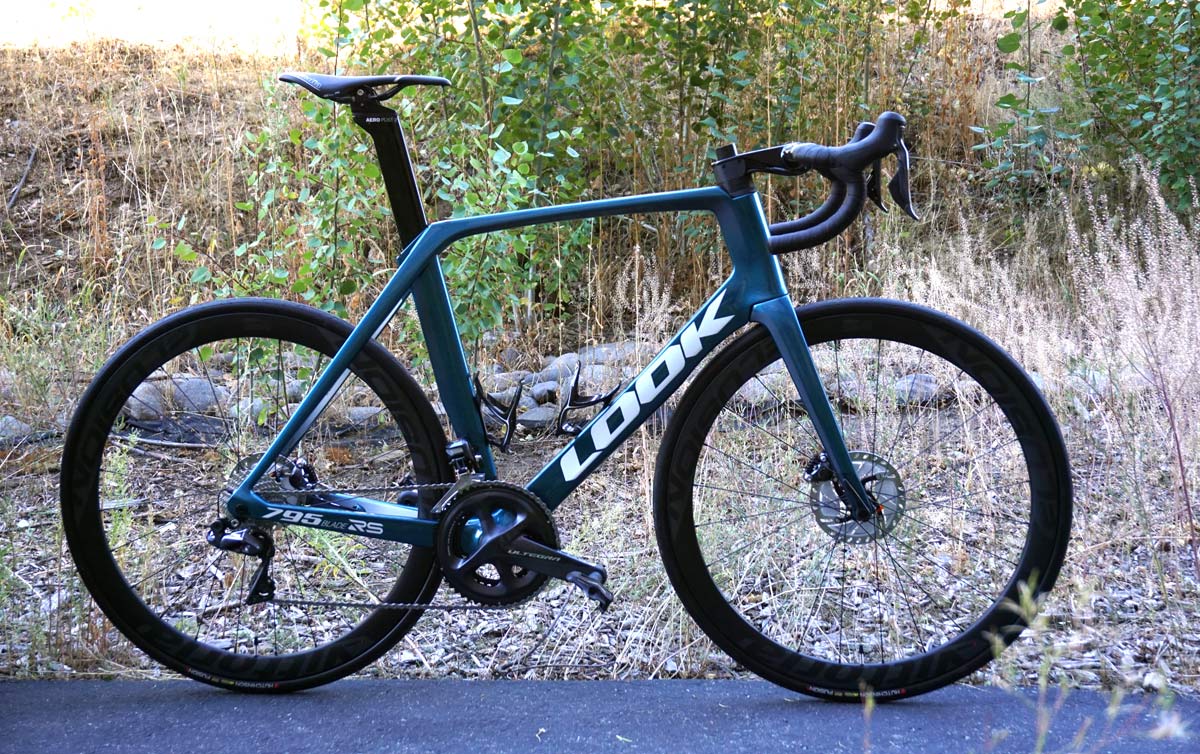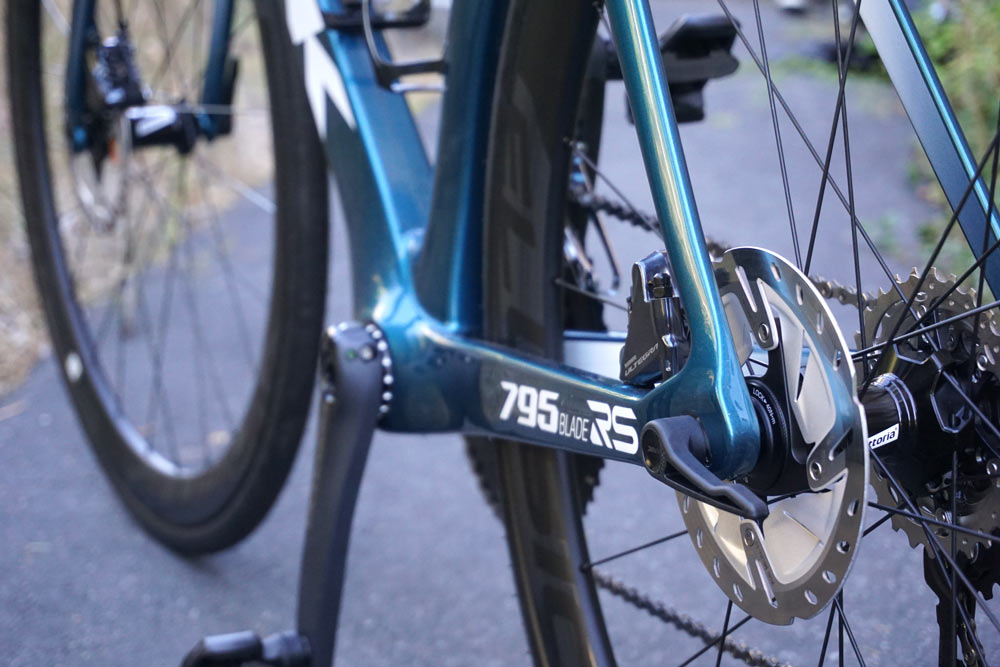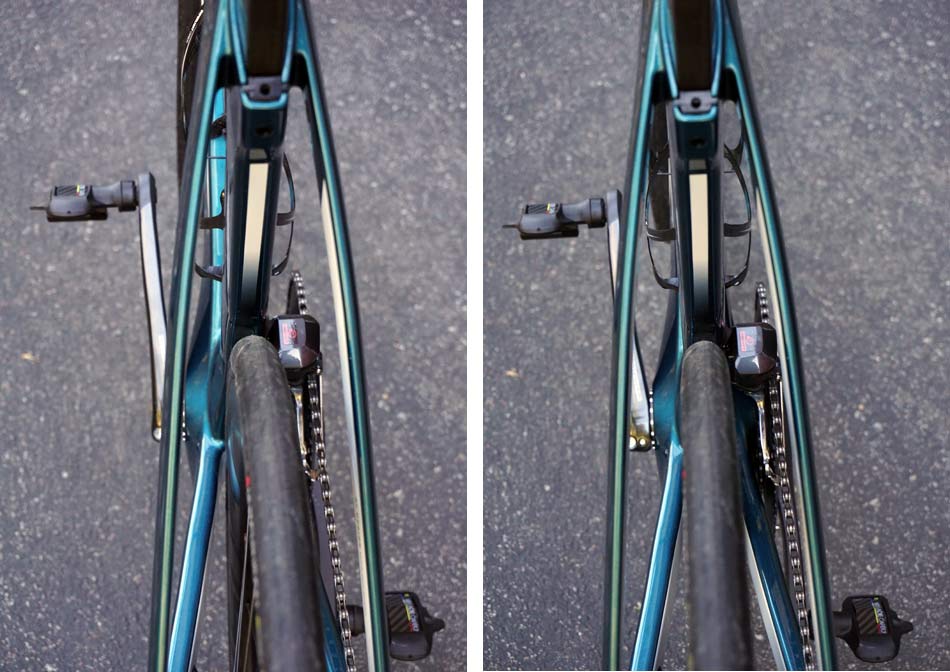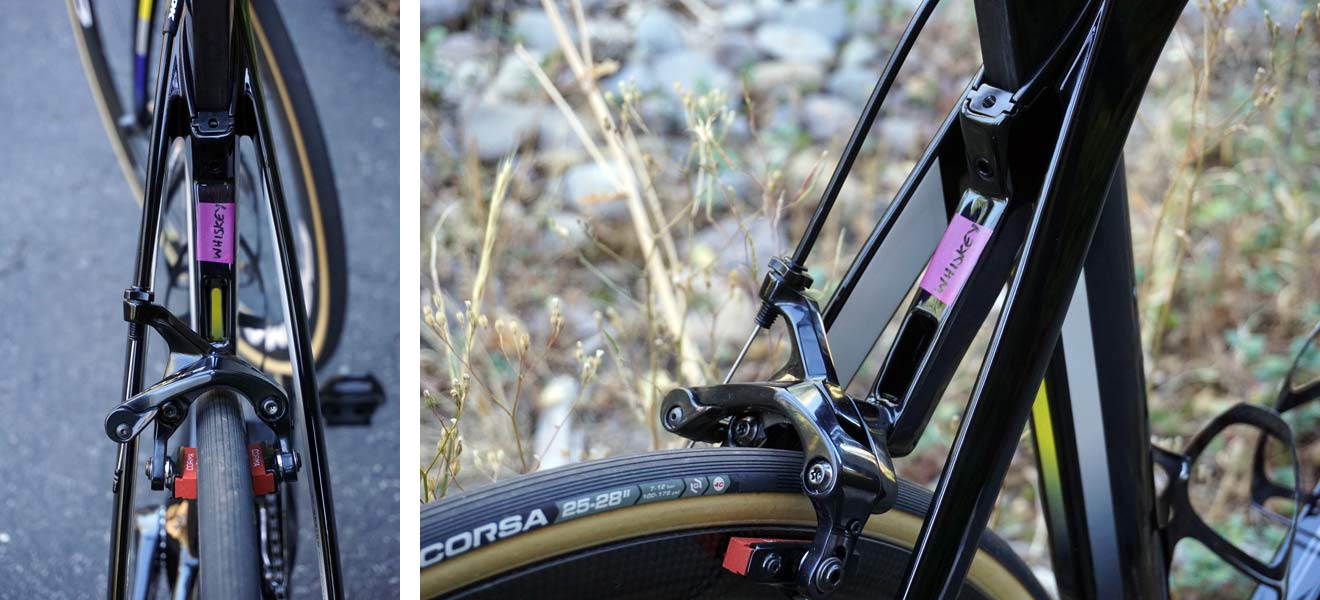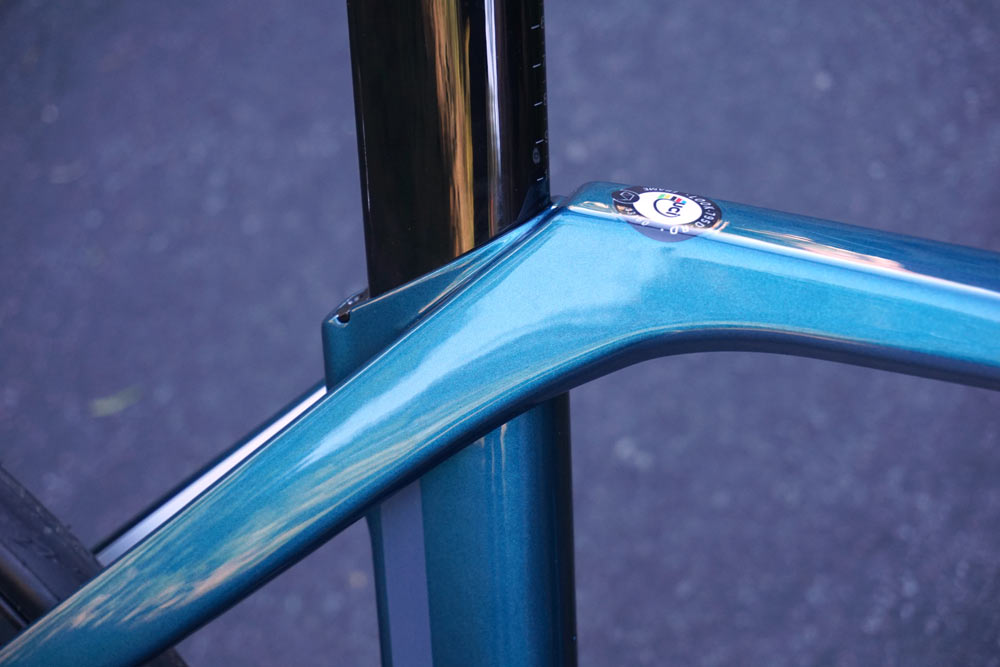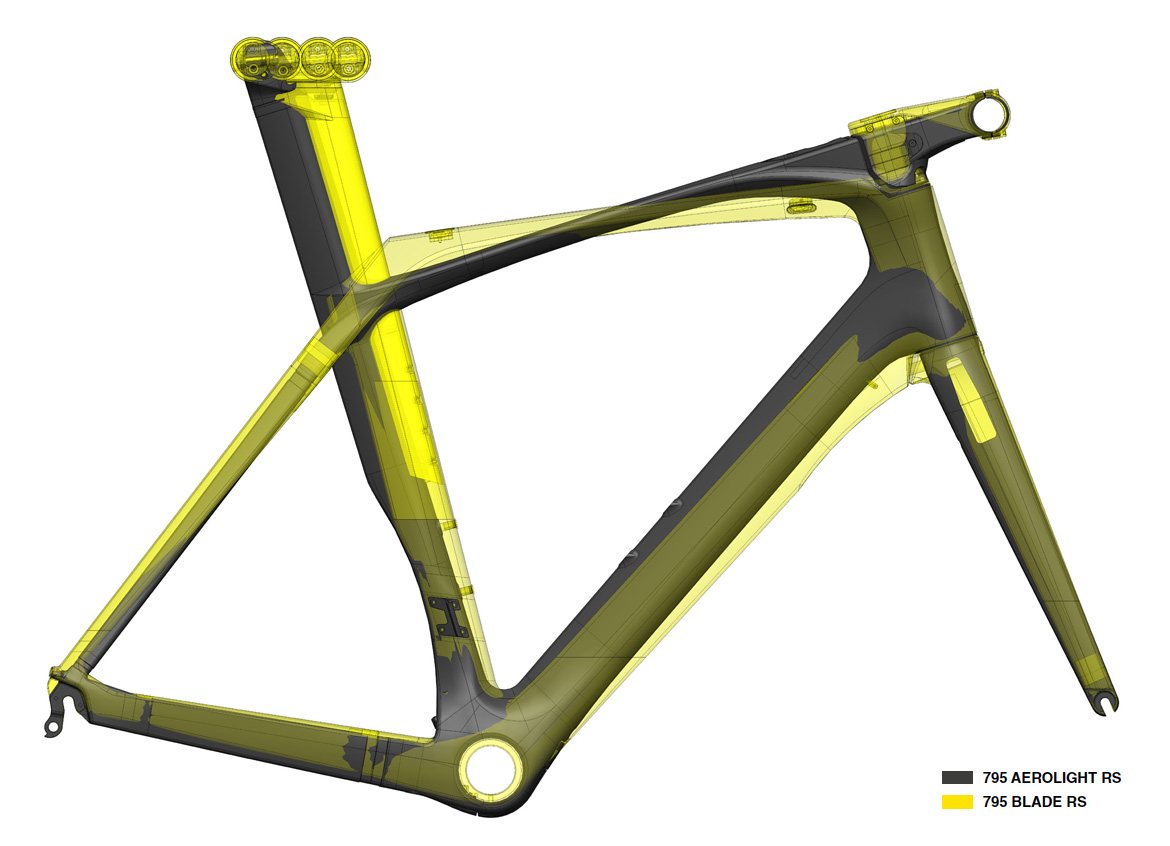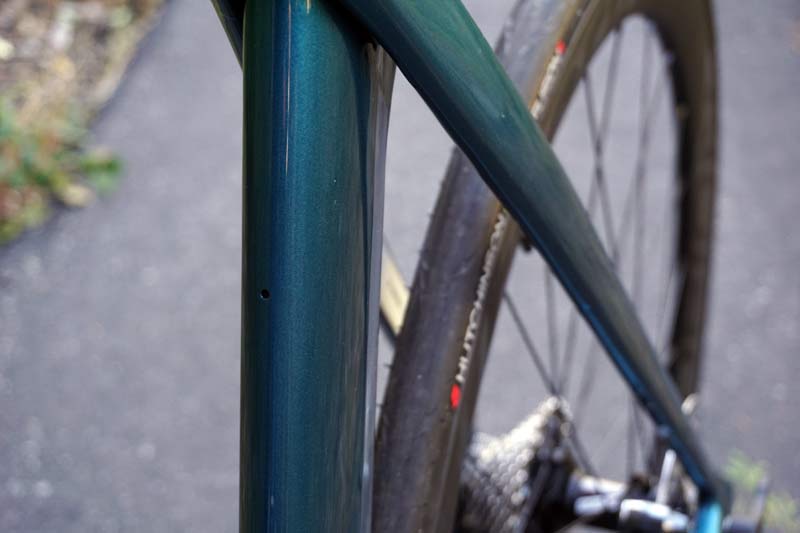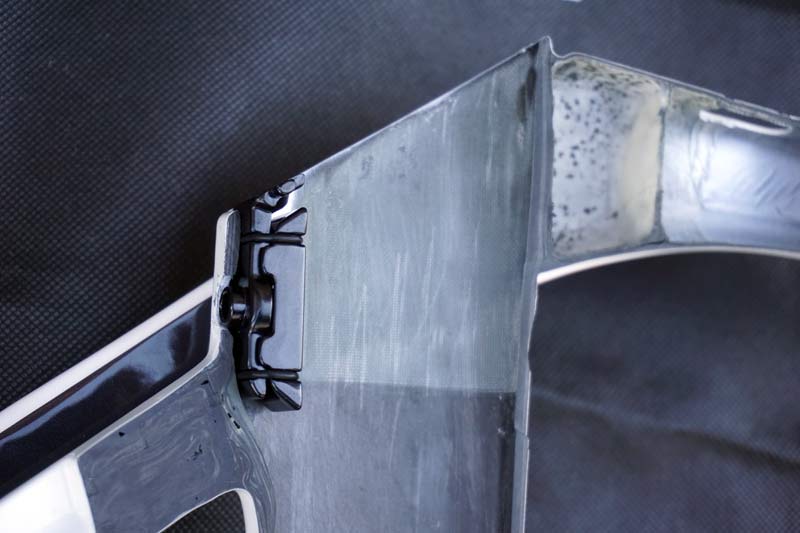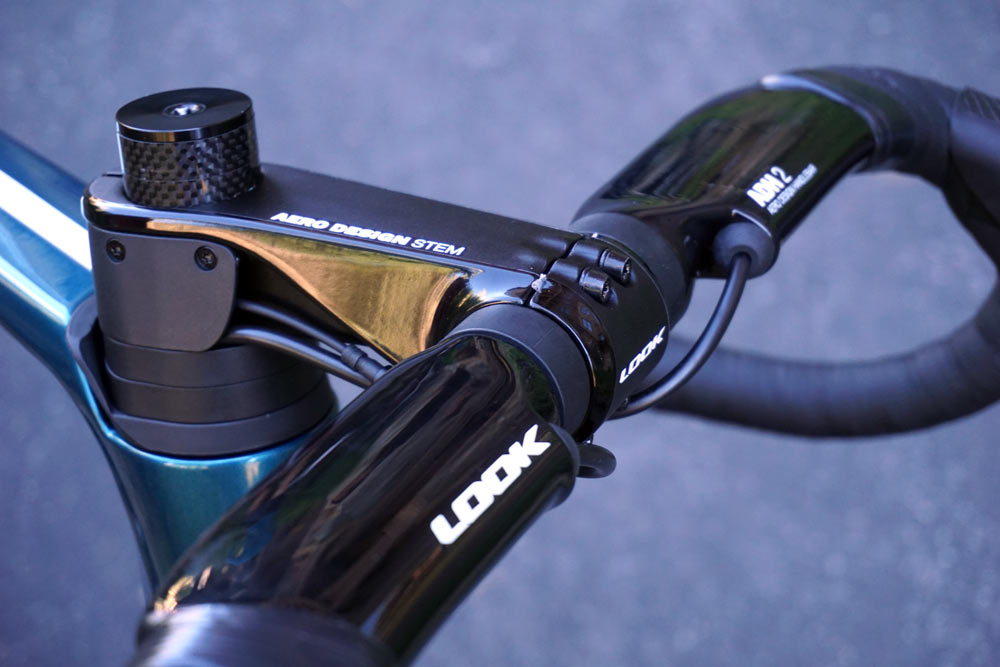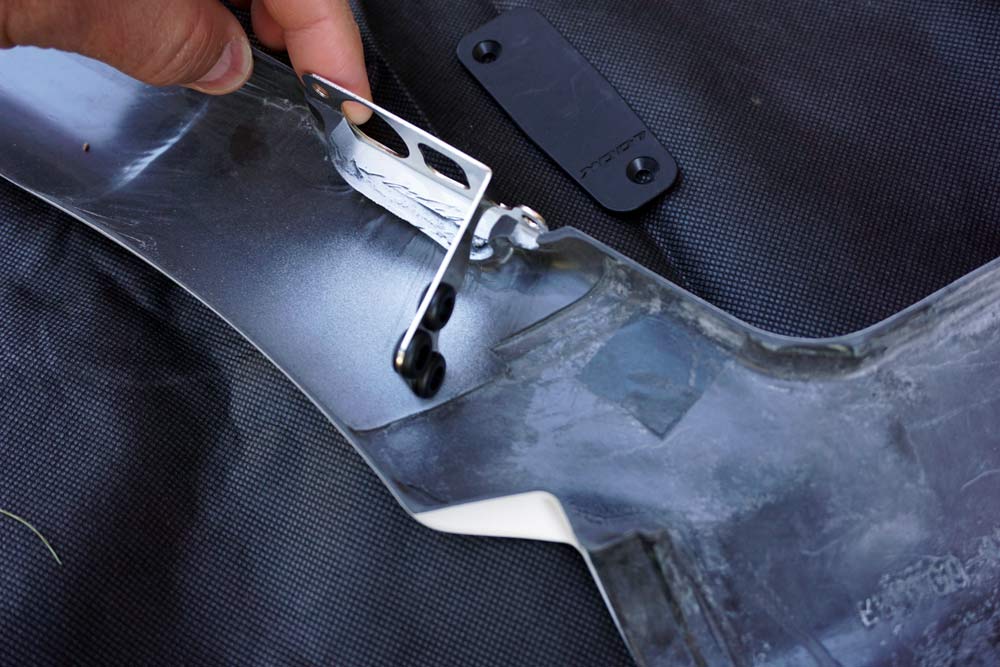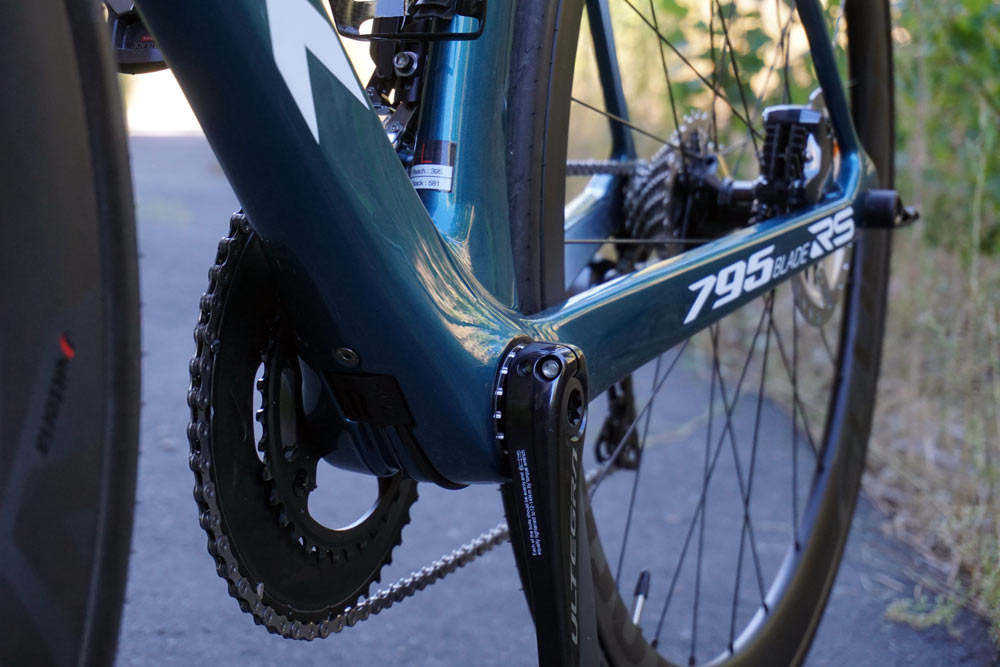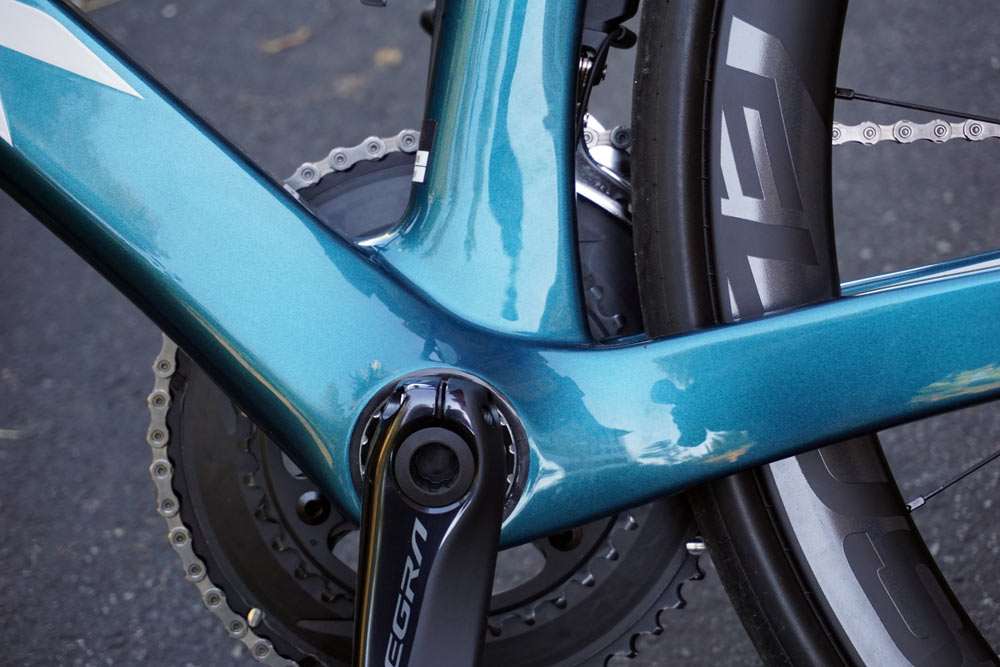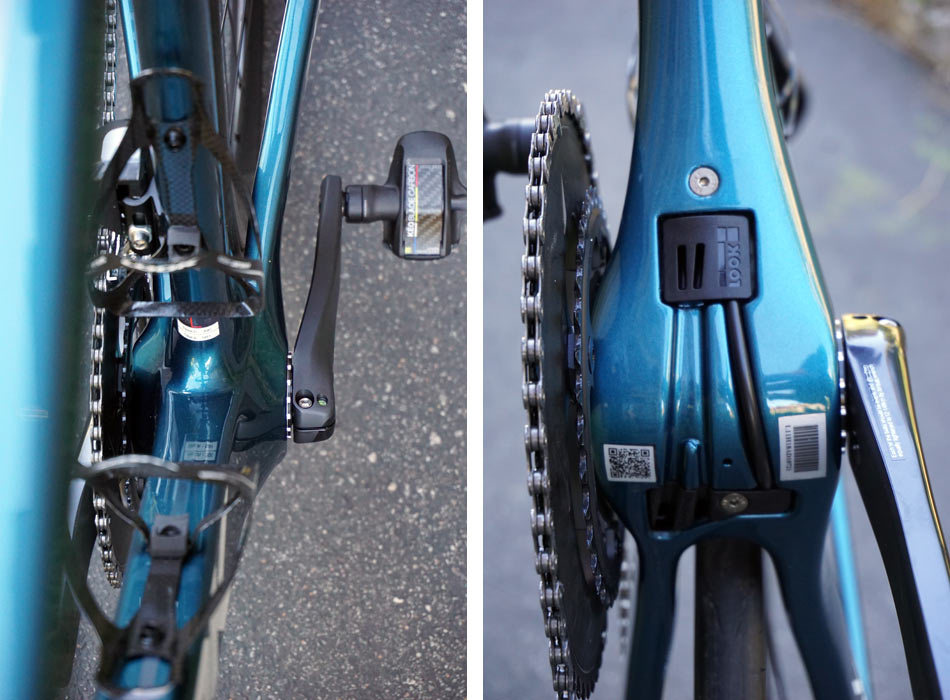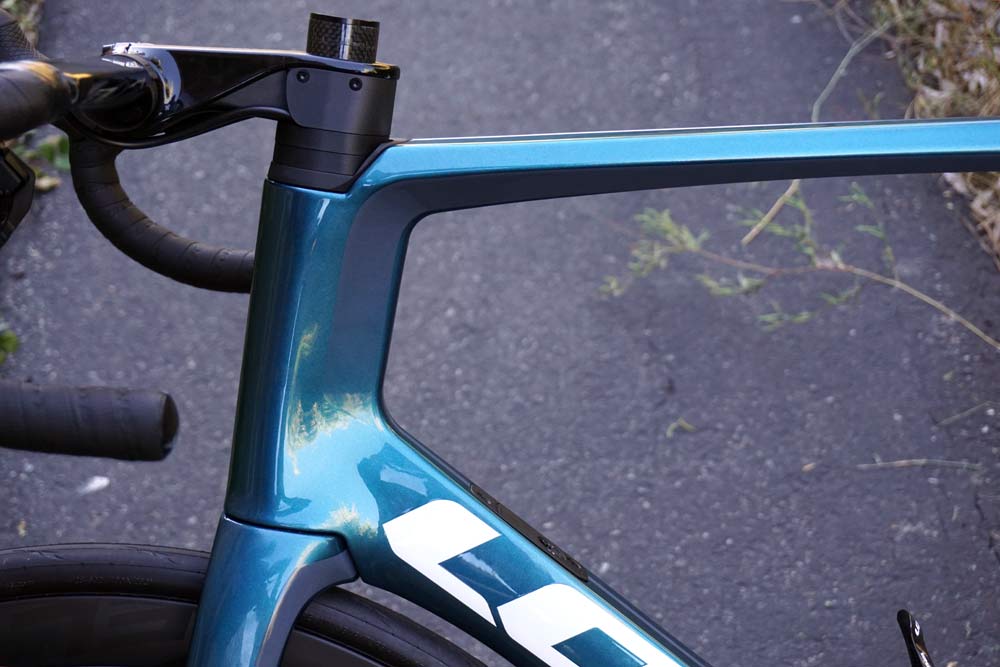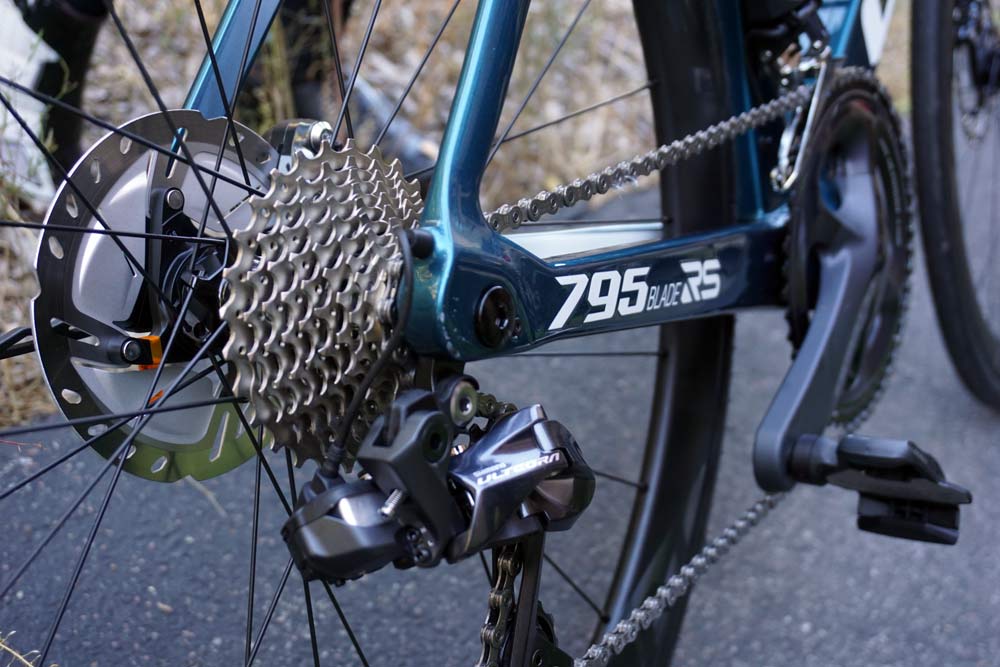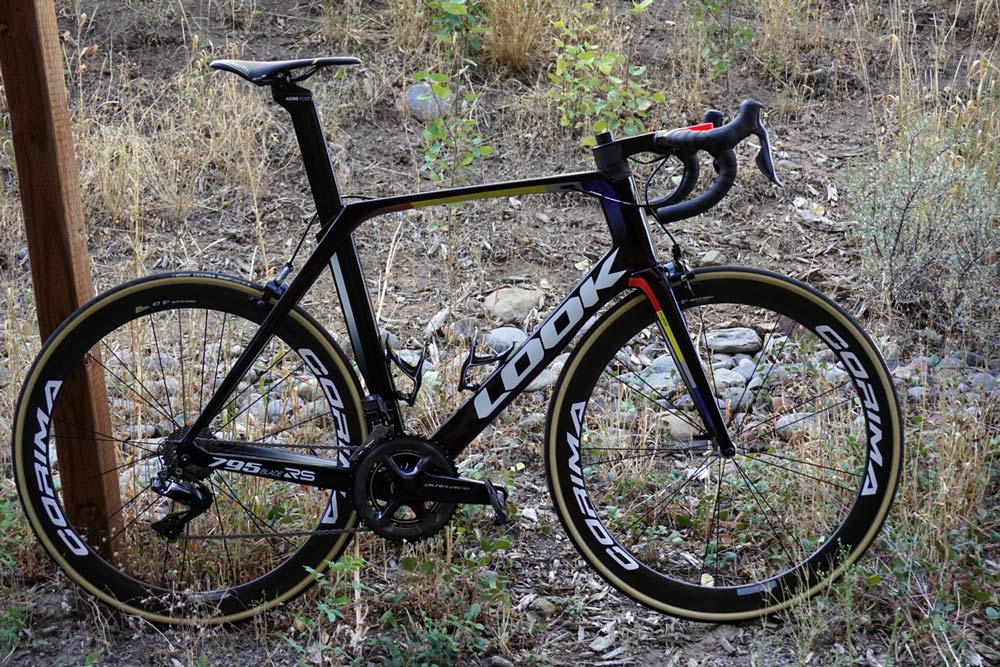First shown to the public at Eurobike along with an upcoming gravel bike concept, the all-new Look 795 Blade RS aero road bike was on display but with no tech info, specs or details available. Now, they’re ready to unveil the goods on their first full aero disc brake road bike. There’ll be a rim brake version, too, which gets a surprisingly similar look and feel considering the different braking loads placed on the frame.
The 795 Blade RS is both designed and manufactured by Look in France at their own factory. It’s an all new frame from the ground up with the goal of being aerodynamic, comfortable, and versatile. Here’s how they put it all together…
At the back is their 3S Design (stands for Smooth Sword Seatstays), which use aero shaped tubes that have compliance built in. It’s a bi-arched design that allows for vertical flex, which is enhanced by losing the seatstay brake bridge, even for the rim brake model. They say this offers 23% more compliance than the prior models that had straighter tubes and a seatstay bridge.
An extended arm provides the rim brake calipers’ mounting point, leaving the seat stays completely free to flex as intended.
The disc brake bike gets 12mm thru axles front and rear, using the Mavic SpeedRelease axle system for quick, secure wheel changes.
Those new stays top out at a unique seatpost junction that appears to fall off in a rearward slope, but actually hides the clamping mechanism. Not only is the look of this dramatically different, it’s also a normal (albeit proprietary) sliding seatpost as opposed to the fixed seatmast on the 795 Light. Another unique feature is the post’s head, which can be swapped to create four different positions with just two parts. This allows effective seat angles from 71.8º to 73.8º to 76.3º to 78.4º. The latter is very steep, making this a great short-course bike for “recreational” triathletes that want a single bike that works for their regular road rides the rest of the year.
Compared to the 795 Light, the seat tube is much steeper, too, which is how they get the more forward seating position, yet it can also be set up to match the same rearward “roadie” seating position as the 795 Aerolight RS.
A small hole on the seat tube provides a quick check for minimum seatpost insertion. If you can stick a paperclip in there, the seatpost is too high.
The hidden “clamp” is fixed inside the frame and uses bolts to push the wedge against the seat tube, in turn pushing it against the frame to hold it in place. The oversized wedge provides a big contact patch so it’s more secure and won’t create small pressure points that could end up damaging the carbon.
In addition to the seatpost, the stem is also somewhat more traditional, using a proprietary aero shape that nests into the frame, but uses standard two-bolt mounting system. It holds a new aero handlebar, which has aero flat sections on the top that include mounting spots for their aero extension and arm rest kit. It also has entry and exit ports for all manner of hose, cable and wire, letting you start your clean cockpit before it even gets to that new stem.
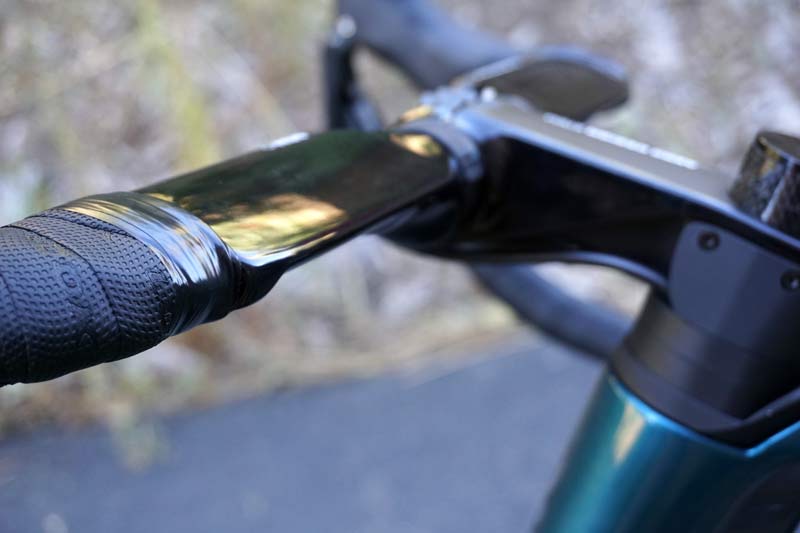
Cable routing was kept easy and intuitive, yet also nearly fully internal. Things pop out of the front of the handlebar, then run directly under the stem and into the frame. This keeps it very streamlined, yet still allows for full adjustment of the stem height with up to 50mm of spacers without needing to undo any cables. This does lock you into using their stem, but it’s still an easy-to-use system. They say design also keeps the steering moving freely compared to some internally routed stem-and-frame combos that can feel like they’re binding slightly.
Inside the frame are guides that can be pulled out during install to help you feed the cable/hose through them. The end result should be smooth, straight, rattle free lines that are kept out of the wind.
It’s covered by a plate that doubles as the Di2 junction control mount.
Down below, it uses a BB386 bottom bracket and comes standard with a Token thread-together bottom bracket to maintain better alignment and creak-free performance compared to the typical pressfit BBs found on many bikes.
It’s a massive bottom bracket junction, which should provide perfectly stiff and efficient power transfer. Below are cutaways showing how the internal routing works, and it’s all sent outside of the BB shell for easier swaps and maintenance without needing to remove the BB. Cover plates and cable stops make it all very intuitive and secure.
CARBON CONSTRUCTION
Compared to traditional carbon frames, Look says their construction method uses more layers of carbon per tube, between 10 and 20 depending on the tube or part, with a blend of six different fiber types.
This lets them better tune the ride characteristics than brands that may only use five or six layers, which doesn’t offer as many opportunities to orient the fibers since each layer would be asked to do more work. In total, there are 163 pieces per fork, 503 pieces per frame. Frame stiffness changes as frame sizes change, as does the fork.
Claimed frame weight is 950g (rim brake, middle size), and 300g for the fork.
AERODYNAMICS & RIDE QUALITY
The frame’s aerodynamics started out in CFD, then moved to the Belgian wind tunnel to prove the truncated air foil shapes they chose for the head tube, down tube, and seat tube. They tested it across a wide range of wind angles, and compared the results to their other bikes. The prior 795 Light aero road bike measured as needing 124 watts to travel at 45km/h. The new 795 Blade RS rim brake model drops that slightly to 122 watts, and the disc brake Blade RS matched it at 124 watts.
So, it’s aerodynamic, but, in their words, “there are a lot of aero bikes out there. What’s hard is making an aero bike that’s a joy to ride.” And that’s where their focus is.
SPECS & AVAILABILITY
At launch, the new 795 Blade will only come in the RS level, which is their top version that uses a lighter layup. In typical Look lineups, the RS models are about 10% lighter and cost about $1,000 more than the standard models. Look for rim brake models with Dura-Ace Di2 and Mechanical, and Ultegra Di2 and Mechanical, groups with either Corima or Mavic wheels. Disc brakes versions will have two Ultegra Di2 builds, one with a TT cockpit build and one with a traditional drop bar, and one Ultegra mechanical build. Pricing ranges from $5,200 up to $10,000.
Each bike ships with a complete kit of spacers, extra derailleur hangers and any special tools or small parts you’d need to adjust and use the bike. Different stem lengths are available separately, too.
What you may have noticed on the two bikes we photographed is that they’re painted with both more modern colorways as well as Look’s traditional white or black with blocked yellow, red and blue squares. You’ll see both options, including a bold red paint scheme, which should help them appeal to a broader audience.
